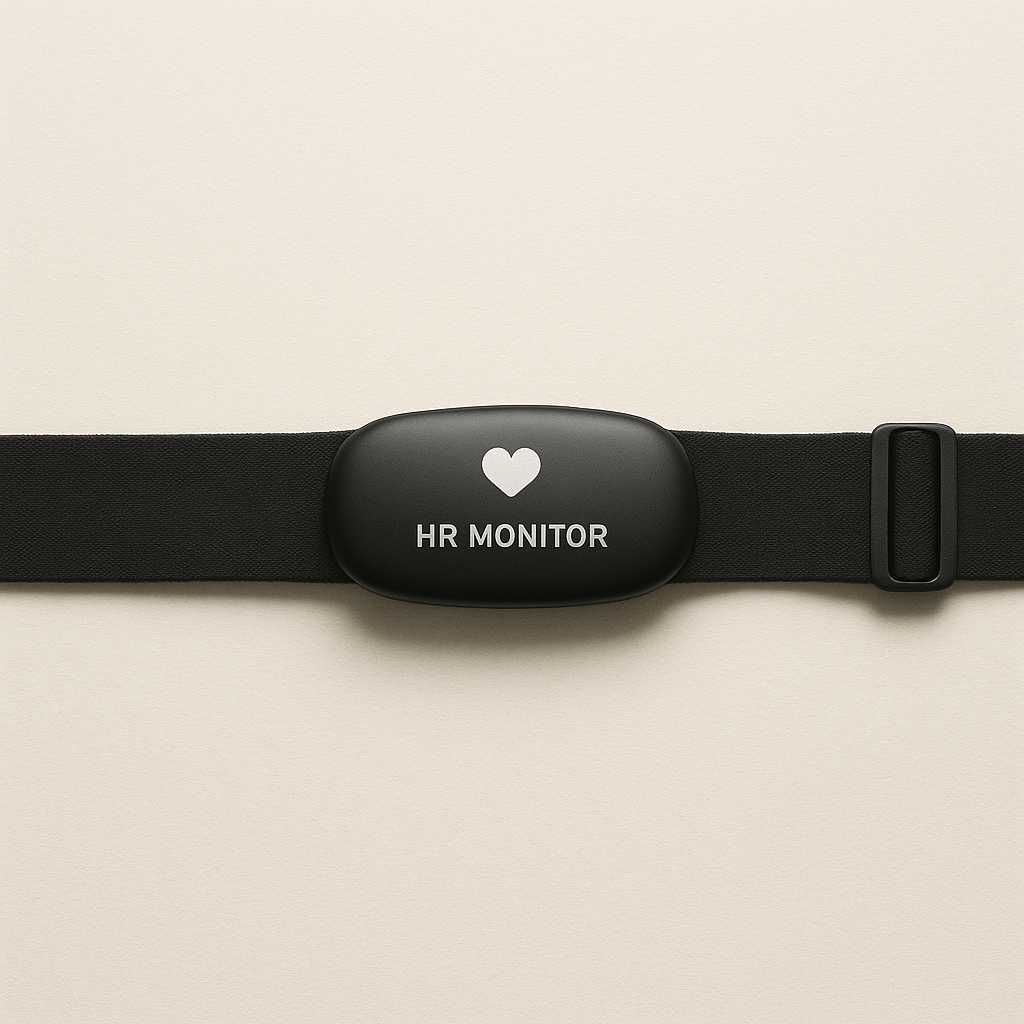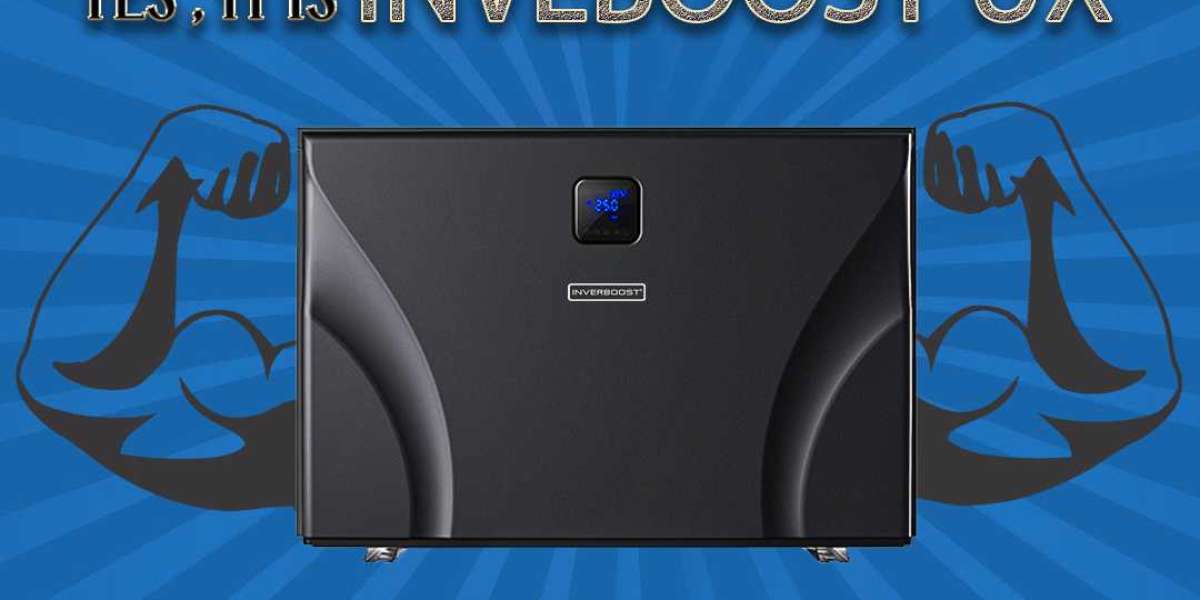A chest strap HR monitor, also known as a chest strap heart rate monitor, is a wearable device that tracks your heart rate during exercise or physical activities. It is worn around your chest, close to your heart, and provides accurate data in real-time. Many people use this device to check their fitness levels, manage their workouts, or even track recovery.
Unlike smartwatches or wrist-based monitors, a chest strap HR monitor provides more accurate results because it stays close to your heart and uses electrical signals instead of light sensors. Whether you're running, cycling, doing cardio, or strength training, it helps you train better and safer.
In this article, we’ll explore how this small tool makes a big difference in your fitness routine. We’ll also explain how it works, who should use it, and how to choose the right one. Let’s understand this fitness gadget in very simple words.
How Chest Strap HR Monitor Works
A chest strap HR monitor works using sensors placed against your skin. These sensors detect your heart’s electrical signals – the same signals used in an ECG. The strap then sends this data wirelessly to a watch, phone, or fitness app.
This device tracks your heart rate in beats per minute (BPM). For example, if your heart beats 130 times in a minute, the screen will show “130 BPM.” It gives real-time data while you are exercising, so you can know whether to push harder or slow down.
Most chest strap HR monitors use Bluetooth or ANT+ to connect with other devices. Bluetooth works with smartphones, and ANT+ connects with fitness watches or cycle computers. Some models can store your heart rate data even when not connected and later upload it to your app.
Because the strap is worn tight around your chest, it doesn’t move around like wristbands. This stable position helps it give very accurate results, especially during intense workouts. That’s why athletes and professional trainers prefer chest straps.
So in short, it works by reading your heart’s electrical pulses, turning them into numbers, and sending those numbers to a screen for you to see and understand your heart activity.
Why Chest Straps Are More Accurate
When it comes to heart rate tracking, accuracy matters. A chest strap HR monitor gives the most reliable numbers. It tracks your heart’s real beats, not just vibrations or blood flow patterns like some wrist monitors.
Many people use smartwatches or fitness bands, which track heart rate using optical sensors. These sensors shine light through your skin and check how the light reflects from your blood. It sounds smart, but it’s not always right, especially during fast movements, sweat, or when your skin is dark.
Chest strap monitors are different. They use electrical signals, which are stronger and more direct. That’s why even hospitals use a similar method for ECGs.
Here’s why chest straps are more accurate:
They stay in place on your chest.
They read directly from your heart’s electrical activity.
They are less affected by sweat, skin tone, or hand movement.
They give stable readings even during running, jumping, or cycling.
If you want to check your true heart rate, especially during serious workouts, a chest strap HR monitor is the better option. Fitness coaches, runners, cyclists, and people doing interval training often prefer chest straps because every beat counts in their plan.
Even if you’re just starting out in fitness, using a chest strap helps you know how your body is reacting to exercise. It’s like having a fitness coach inside your shirt.
Benefits of Using Chest Strap Monitor
Using a chest strap HR monitor offers many benefits beyond just knowing your heart rate. It can change how you train, how you rest, and even how you live.
Here are some key benefits:
1. Real-Time Feedback:
The monitor shows your heart rate live as you move. If your goal is fat loss, you can stay in the fat-burning zone. If your goal is endurance, you can see when to push harder.
2. Improve Fitness Faster:
When you train in the right heart rate zone, your body improves faster. You avoid overtraining and undertraining. It’s a smarter way to grow stronger.
3. Safer Workouts:
By tracking your heart rate, you avoid pushing yourself too far. This is very helpful for people with heart conditions or those who are new to exercise.
4. Better Recovery:
Some monitors check your heart rate even after workouts. A fast recovery shows good fitness. A slow recovery may mean your body needs rest.
5. Accurate Calories Burned:
Apps that use chest strap data can better calculate how many calories you burn, based on your heart rate, age, and weight.
6. Motivation to Keep Going:
Seeing your numbers improve can push you to stay consistent. Your heart rate data becomes a personal progress report.
Whether you walk daily or do intense training, a chest strap HR monitor helps you understand your body better and make each minute count.
Choosing the Best Chest Strap Monitor
When picking the right chest strap HR monitor, you don’t need the most expensive one—you need the one that fits your needs. Let’s look at how to choose the best one for you.
Key Features to Consider:
1. Comfort and Fit:
The strap should feel soft, stretchable, and not too tight. You’ll be wearing it for long periods, so comfort matters.
2. Battery Life:
Some models have replaceable batteries that last months, while others are rechargeable and last weeks. Pick what works best for you.
3. Connectivity (Bluetooth/ANT+):
If you plan to connect to your smartphone, go with Bluetooth. If you use a fitness watch or bike computer, make sure it supports ANT+ or both.
4. Waterproof:
If you swim or sweat a lot, waterproofing is important. Some models even support heart rate tracking while swimming.
5. App Support:
Look for a chest strap that works with your favorite fitness apps like Strava, Garmin, Polar, or MyFitnessPal.
6. Memory Storage:
Some chest straps can store heart rate data even without a phone. This is great for workouts without devices nearby.
Brands like Polar, Garmin, Wahoo, and Coospo are popular for their reliable chest strap HR monitors. Check reviews and try one that fits your body size, budget, and workout type.
Remember, the best chest strap HR monitor is the one that you will actually use regularly.
Tips to Use Chest Strap Effectively
To get the most out of your chest strap HR monitor, you need to use it correctly. Just wearing it is not enough—you have to wear it the right way and follow some simple habits.
Simple Tips for Better Use:
1. Position it Right:
Wear the strap just below your chest muscles, tight enough so it doesn’t slip but not too tight to feel uncomfortable.
2. Wet the Sensors:
Before putting it on, slightly wet the sensor pads with water. It helps in getting better contact with your skin and improves accuracy.
3. Connect to Your Device:
Pair the chest strap with your phone or watch using Bluetooth or ANT+. Once paired, your data will start showing on the screen or app.
4. Clean After Use:
After every workout, wipe the strap with a damp cloth or hand wash it to keep it clean and long-lasting. Don’t wash the sensor unit—just remove it first.
5. Track Trends, Not Just Numbers:
Don’t stress over a single workout. Look at your weekly or monthly data to see improvements in your fitness level.
6. Use in Different Workouts:
You can use it while walking, cycling, yoga, or gym sessions. It’s not just for runners.
7. Replace Battery on Time:
If readings become strange, it may be time to change the battery or recharge the unit.
By using it correctly, your chest strap HR monitor becomes your personal fitness assistant. You learn more about your body, make better decisions, and see results faster.

Who Should Use Chest Strap Monitor
Anyone who wants to improve fitness, lose weight, or train better can use a chest strap HR monitor. It’s not just for athletes. Let’s look at who can benefit the most:
Best for:
1. Beginners in Fitness:
If you’re starting workouts, knowing your heart rate helps you train safely. You’ll avoid going too hard too soon.
2. Runners and Cyclists:
Tracking heart rate zones helps improve stamina and speed. Chest straps give real-time, accurate data during movement.
3. Weight Loss Seekers:
To burn fat, you need to stay in the fat-burning zone (usually 60–70% of your max heart rate). The chest strap helps you stay there.
4. HIIT and Cardio Trainers:
High-intensity training needs sharp monitoring. Chest straps are ideal for fast changes in heart rate.
5. People with Heart Issues:
Some doctors advise using a heart monitor during light activity. It can help track and control your heart safely.
6. Fitness Coaches and Athletes:
They use chest straps to track performance, progress, and recovery. It helps plan workouts scientifically.
In short, anyone who cares about fitness, health, or safety can use a chest strap HR monitor. It’s a smart investment for your health journey.
Conclusion: Smarter Fitness Starts With Tracking
Using a chest strap HR monitor is one of the simplest yet smartest ways to improve your health and fitness. It gives you the real story of your heart—how hard it’s working, how fast it recovers, and how much effort you’re really putting in.
Whether you are walking, running, cycling, or doing yoga, this small device helps you stay in control of your training. It teaches you how your body works and responds to different exercises.
In a world full of fitness gadgets, the chest strap HR monitor remains a top choice for serious results. It’s accurate, reliable, and easy to use once you understand it.
So if you're looking to get fitter, train smarter, or just understand your body better, consider getting a chest strap HR monitor. It may be a small tool, but it can lead to big changes in your fitness journey.
Frequently Asked Questions (FAQs)
Q1: Is a chest strap HR monitor better than a smartwatch?
Yes. Chest strap HR monitors are more accurate than smartwatches because they read electrical signals directly from your heart.
Q2: Can I use a chest strap monitor with my phone?
Yes. Most chest strap monitors use Bluetooth and work with popular fitness apps on both Android and iOS.

